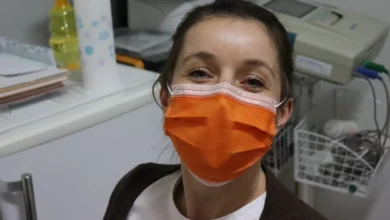How to Prevent Abuse in Nursing Homes

A severe problem that affects millions of older people is nursing home abuse. It may result in physical harm, disease, hospitalization, and even death.
Abuse can be stopped in nursing homes in a variety of ways. You can better safeguard your loved ones by educating yourself and them on the danger signs and types of abuse.
Adequate staffing
A nursing home’s staffing levels can have an impact on the safety of residents. For example, inadequate staffing can lead to medication errors because of a lack of time to monitor and administer medications.
Nurses have called for minimum staffing levels in hospitals and nursing homes for years, citing evidence that safe staffing saves lives. Nevertheless, those efforts stalled until the coronavirus pandemic sparked a new sense of urgency.
This month, the New York State Assembly enacted a law requiring facilities to meet specific staffing requirements. That bill grew momentum after the attorney general released a report that linked understaffed facilities to high coronavirus deaths.
The report validated nurses’ experiences and prompted the passage of a bill requiring facilities to have staffing ratios of one nurse to every five patients or higher. It will be enforced by revocation of the facility’s operating license if they fall below those standards.
Regular communication
A lack of communication can significantly cause abuse in nursing homes. It is because staff cannot effectively communicate with residents and cannot know what is happening in a resident’s mind.
Several studies have shown that communication training can be an effective way to prevent abuse in nursing homes. The training provides staff with tools to recognize abusive situations and resolve them.
In addition, staff can use this knowledge to avoid conflicts that may lead to physical abuse.
The training also teaches aides to be more friendly and personal when communicating with residents. It can help prevent residents from feeling like they are being ignored and could result in more agitation and aggressive behavior.
Regular inspections
Regular inspections are the best way to ensure that nursing homes meet federal standards. These can include safety measures, staffing requirements, and care standards for residents with specific needs.
Infection control standards are also necessary. It includes a requirement to have a designated place for handwashing and proper disinfection.
Inspectors conduct these surveys routinely, sometimes over a few hours or days. After the inspection, a report is written detailing any issues found.
A citation can be issued if the inspector finds an issue that violates federal or state law. The facility must then submit a plan for correcting the problem.
Despite these efforts, abuse, and neglect are still common in nursing homes. The GAO has identified several factors that contribute to abuse. The most concerning are inadequate staffing, unsafe living conditions, and poor medical care.
Regular evaluations
Nursing homes are a high-risk environment for elder abuse and neglect. It is because residents often need extensive help with daily activities such as dressing, bathing, and eating.
However, nursing home abuse and neglect can be challenging to detect. Therefore, it is essential to have regular evaluations.
Using the National Long-Term Care Ombudsman Program, which gathers grievances from nursing homes and their residents and families, is one way to achieve this.
While physical abuse is often the most common type of complaint received by ombudsmen, verbal and psychosocial abuse are also frequent.
Many staff members report that they have witnessed verbal abuse in the nursing homes they work in. For instance, 58 percent of CNAs reported having witnessed staff yelling at residents, while 36 percent said they have seen staff insulting or swearing at residents. In addition, 11 percent have witnessed a team threatening to hit or throw something at a resident.






